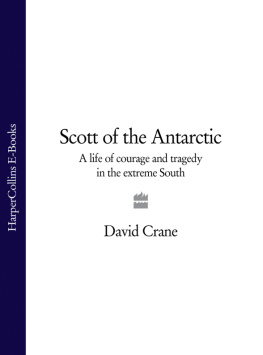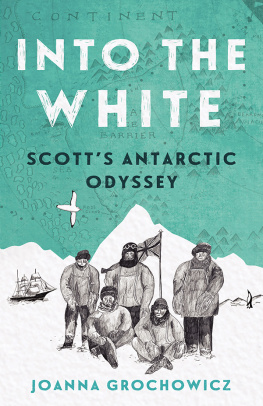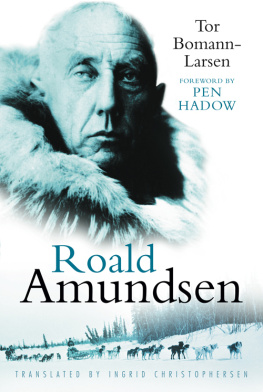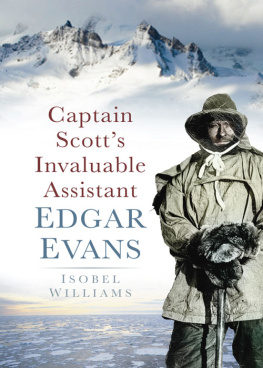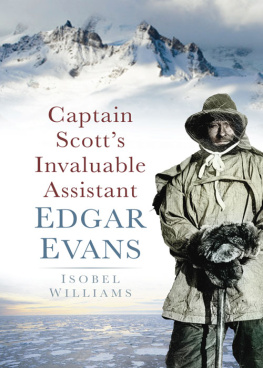Contents
The Final Preparations in New ZealandGeneral StowageDepartureOn Deck with the DogsThe Engine room FloodedClearing the PumpsCape Crozier as a StationBirds of the SouthA Ponys MemoryAn Incomparable SceneFormation of the Pack
Incessant ChangesThe Imprisoning IceSkiing and Sledging on the FloesOpening of the PackA Damaged RudderTo Stop or not to StopNicknamesPenguins and MusicComposite FloesBanked FiresChristmas in the IceIce MovementsState of the Ice-houseStill in the IceLife in the PackA CalmThe Pack Far to the NorthScience in the Ice
Land at LastReach Cape CrozierLanding ImpossibleEntering McMurdo SoundCape Evans as Winter StationThe Ponies LandedAdventure with Killer WhalesHabits of the Killer WhaleLanding StoresThe Skuas NestingDangers of the Rotting Ice
A Dog DiesResult of Six Days WorkSnow-blindness in DogsLoading BallastPony ProspectsFirst Trip to Hut PointPlan of HutA Secure BerthThe HutHome Fittings and StoresThe Ship StrandedIce Begins to go
Stores for DeptsCrossing the Great Pressure RidgeDept PlansPony SnowshoesImpressions on the MarchSledging Necessities and LuxuriesA Better SurfaceWeatherbound at Corner CampMarching RoutineThe Weakest Ponies ReturnDogs Attack PonyA Resented FrostbiteOne Ton Camp
Dogs and Ponies WaysThe Dogs in a CrevasseChances of a Snow BridgeThe Dog RationsA Startling MailA Blizzard at Safety CampThe Ice BreaksThe Ponies on the Floe
A Possible Land RouteThe Geological Party ArrivesCondition of the DogsGeology at Hut PointAn Ice Foot ExposedStabling at Hut PointFormation of the Sea IcePancake IceLife at Hut PointFrom Hut Point to Cape EvansDates of the Sea Freezing
Baseless Fears about the HutSimpsons CornerThe Biologists CubicleAn Artificer CookSledging to Hut PointStart from Hut Point DelayedOn Getting Hot
OccupationsMany TalentsThe Young Ice Goes OutSimpsons LectureFootball: New IceIndividual Scientific WorkIndividuals at WorkFloe TemperaturesA Bacterium in the SnowSpirit of the Expedition
The Electrical InstrumentsOn Horse ManagementA Frostbite arouses AmusementThe Nimrod HutContinued WindsModern InterestsCamera TriumphsA Tribute to Wilson
VentilationOn the Meteorological InstrumentsOn the Beardmore GlacierLively DiscussionsAction of Sea Water on IceOn Arctic SurveyingIce StructureOcean LifeOn VolcanoesOn Motor SledgingA Blubber StoveMidwinter Day DinnerAn Ethereal Glory
Start of the Crozier PartyStrange WindsSki ShoesLost on the FloeThe Wanderer ReturnsPony ParasitesA Great GaleA Sick PonyA Sudden RecoveryEffect of Snowdrifts on the FloesUnexpected Ice ConditionsTelephones at WorkThe Cold on the Winter JourneyA Most Gallant StoryWinter Clothing Nearly Perfect
The Indomitable BowersAge and EnduranceOn Horse ManagementThe Two Esquimaux DogsA Radium LectureFrom Tent IslandOn IndiaStorms and AcclimatisationEffect of the Returning SunThe Dbris ConesOn Chinese AdventuresGeology near the Hut
On Polar ClothingProspects of the Motor SledgesOn the Southern PlansMovement of the Ferrar GlacierMarching against a BlizzardThe Value of ExperiencePonies Ups and Downs
Clissolds AccidentChristophers PranksA Motor MishapNo Race to the PoleSome Personal SketchesA Football KneeValue of the MotorsThe First Motor on the BarrierLast Days at Cape Evans
Midnight LunchesThe Second Motor FailsCurious Features of the BlizzardPonies Go WellA Head WindBad Conditions ContinueAt One Ton CampDaily Rest in the SunSteady PloddingThe First Pony ShotA Trying MarchDogs, Ponies, and DrivingThe Southern Mountains AppearThe Third BlizzardThe Fifth and Long BlizzardPatience and ResolutionStill Held Up
With Full LoadsAfter-effects of the Great StormA Struggle with the Soft SnowThe Lower Valley of the BeardmoreWilson Snow-blindThe Upper Glacier BasinAt Upper Glacier Dept
A Change for the BetterLashly in a CrevasseThe Task of GuidingLost Time Made UpComfort of Double TentLast Supporting Party ReturnsHard Work on the SummitThe Members of the PartyA Stiff Pull Both WaysA Chill in the AirForestalledAt the Pole
A Hard Time on the SummitFirst Signs of WeakeningGetting HungrierAccidents MultiplyEvans AccidentEnd of the Summit JourneyHappy Moments on Firm LandIn a Maze of CrevassesA Sick ComradeDeath of PO Evans
Snow like Desert SandShortage of OilThe Grip of ColdThree Blows of MisfortuneFrom Bad to WorseOates Case HopelessThe Death of OatesScott FrostbittenThe Last SceneFarewell LettersThe Last Message
About the Author
Robert Falcon Scott was born in 1868. He became a naval cadet at the age of 13 and he was made a lieutenant in the Royal Navy in 1888. The Royal Geographical Society appointed him to command the National Antarctic Expedition of 19011904. The expedition set sail on the Discovery and reached further south than anyone before. Scott returned to Britain as a national hero. In 1910 Captain Scott organised a second expedition to sail to the Antarctic on board the Terra Nova. On 17th January 1912 the party reached the pole, only to find that they had been beaten by the Norwegian explorer Roald Amundsen. Scott and his companions died on their march back to safety on 29 March 1912. Eight months later, a search party found the tent, the bodies and Scotts journals. The journals were first published in 1913.
About the Book
WITH AN INTRODUCTION BY SIR RANULPH FIENNES
The Last Expedition is Captain Scotts gripping account of his expedition to the South Pole in 1910-12. It was meant to be a voyage of scientific discovery and a heroic exploration of the last unconquered wilderness. Scotts expedition, carried in the Terra Nova, pitted him and his team not only against the elements but also against the Norwegian explorer, Amundsen. Ultimately, Scott was beaten by both. The journals are full of incident and drama, courage and endurance, hope and bitter disappointment.
These journals were found, along with Scotts body, several months after his death and just 11 miles from base camp and safety.
Introduction
In the short Antarctic summer of 191112 five Britons and five Norwegians raced each other to the bottom of the world where no man had been before. Only the Norwegians returned. What happened to the British? Without these journals, which were only located by the finest thread of luck, nobody would ever have known the answer.
The Last Expedition: The Journals of Captain Scott has sold over a hundred thousand copies and has never been out of print since it was first published in 1912. Yet during that time a great many biographers, most of whom have never travelled in polar terrain, have invented their own fantasy versions of Scott, both in books and in movies.
The poor opinion of Captain Scott that is widely held today around the world is the result of a single book, Scott and Amundsen, published in 1979 and written by a minor sports journalist of the Observer newspaper. The author, Roland Huntford, had no knowledge of polar travel but he became the most widely read biographer of early twentieth century explorers by way of his calculated character assassination of Captain Scott. Until Huntfords book was published Scott was a highly respected British national hero.
When you have finished reading The Last Expedition you may well be left wondering just how Huntford managed to bewitch the world into believing his fantasy version of Scott as a failure and a scoundrel. In this Introduction I will demolish the anti-Scott myths I have the advantage of nearly forty years experience of leading polar expeditions and breaking world records of Antarctic travel. Huntford presents himself to his readers as a man with practical snow and ice experience, whereas in reality his most ambitious polar outings were strolls in the snow with his pet dog in the woods around suburban Stockholm.
Next page


